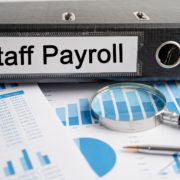Understanding the Excise Tax on Nonprofit Executive Compensation
Nonprofit tax reporting, as outlined in Form 990, presents its own complexities compared to Publicly Held Corporation tax reporting. One in particular is the excise tax imposed on a Tax-Exempt Organization’s five highest compensated “covered” employees, as reported on Form 990, Part VII, Section A, with total compensation exceeding $1,000,000.
This excise tax, first introduced by the “Tax Cuts and Jobs Act of 2017” and currently being amended by “The One Big Beautiful Bill,” is reported under Internal Revenue Code (IRC) 4960 and was imposed to tax Tax-Exempt Organizations for paying top executives as if a Publicly Held Corporation paid them. Retroactive of IRC 4960, there were only deduction limitations if there was an executive compensation of over $1,000,000 for a Publicly Held Corporation; IRC 162(m), while Tax-Exempt Organizations did not have restrictions.
When Does the Excise Tax Apply?
Starting in January 2018, the IRS now requires nonprofits to pay an excise tax when a covered employee’s wages exceed $1,000,000. When this happens, the organization is required to file Form 4720, “Return of Certain Excise Taxes Under Chapters 41 and 42 of the Internal Revenue Code.” Form 4720 must be submitted with the nonprofit’s annual Form 990 filing.
How to Report the Excise Tax
The excise tax is reported in Part I, Line 13 on Form 4720. The calculation on this tax is generated on Form 4720, Schedule N “Tax on Excess Executive Compensation Section 4960.”
The excise tax applies only to the portion of an employee’s compensation that exceeds $1,000,000 (not their total wages) at the corporate rate of 21%. It’s also important to note that the nonprofit, not the employee, is responsible for paying this tax.
Changes Under The One Big Beautiful Bill
Under the current law, the Tax Cuts and Jobs Act of 2017, IRC 4960 applies an excise tax to highly compensated employees of an Applicable Tax-Exempt Organization. Under the updated provisions, The One Big Beautiful Bill, the rule now applies the excise tax to any employee, including any former employees, of an Applicable Tax-Exempt Organization.
What Counts Toward the $1 Million Threshold?
The IRS includes several forms of compensation when determining if an employee’s wages exceed the $1,000,000 threshold. These include:
- Salary
- Bonuses
- Parachute payments
- Gross income from a Deferred Compensation Plan in the year that the plan becomes vested
There is no grandfather rule that exempts older Deferred Compensation Plans from this tax. Even if a deferred plan was created before these tax changes went into effect, the excise tax still applies when compensation is paid or vested.
Have Questions? We Can Help.
Navigating nonprofit tax regulations can be complex, especially when it comes to executive compensation and excise tax reporting. If your organization is approaching the $1,000,000 compensation threshold, or you’re unsure how the rules apply to your employees or deferred compensation plans, we’re here to help.
The team at Leone, McDonnell & Roberts has deep experience working with nonprofit organizations and can walk you through your reporting requirements, tax filings, and compliance strategies. Schedule a consultation with us today to receive clear answers and tailored support for your nonprofit’s specific needs.










